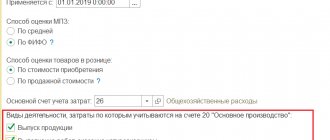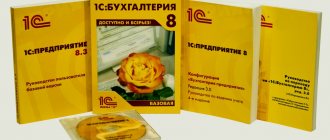HR records for an individual entrepreneur are no less important than for a large company. Why? The answer is simple: an individual entrepreneur must keep records of the wages of his employees and contributions to the Pension Fund of the Russian Federation. At the same time, it does not matter how many employees he has on staff.
When covering this issue, it is necessary to focus on the distinction between two different employers: an individual and an individual entrepreneur. The first include individuals who hire employees for personal service purposes - they do not keep personnel records.
Individual entrepreneurs acting as employers hire employees to carry out profit-generating activities - they are required to maintain personnel records.
When does an individual entrepreneur need to keep personnel records?
For an individual entrepreneur, personnel records are mandatory only when he acts as an employer of labor, that is, he has at least one hired employee.
The acceptance of a future employee into the staff of an individual entrepreneur must be formalized by signing an employment contract. When this fact can be considered accomplished, personnel records become mandatory for individual entrepreneurs. He must comply with the governing provisions of applicable laws.
Organization of personnel records inappropriately threatens individual entrepreneurs with prosecution, including criminal liability.
During inspections, labor inspection bodies have the right to demand the presentation of the necessary documents for employees, and an individual entrepreneur is obliged to provide them.
In addition to the obligation to maintain personnel records, we can highlight some of its rights and individual responsibilities:
- the right to conclude employment contracts in writing for an indefinite period, as well as contracts of a fixed-term nature;
- the right to issue orders based on the provisions of signed agreements;
- the obligation to maintain work books and register them for those hired for the first time;
- the obligation to provide employees with certificates of pension insurance, if necessary;
- the obligation to adopt all local regulatory documents required and required by law;
- the right to conclude collective agreements;
- the right to conduct training among employees on labor protection requirements and control this knowledge.
Salary and personnel
Benefits for temporary disability (illness or injury) of an employee, or for caring for a sick child or other family member are paid when the employee presents a certificate of incapacity for work. He has the right to do this within 6 months from the date of the end of the illness.
The sick leave should be checked. There should be no blots or corrections. Information must be indicated in capital block Russian letters, with empty cells between words. The sheet must bear the signature of the doctor and the seal of the medical organization, and correctly indicate the citizen’s full name, date of birth, gender, place of work (name of your LLC). If there are errors or inaccuracies, the employee must receive a duplicate sick leave.
Get advice on providing an employee with sick leave
How to pay for sick leave.
1. Calculate average earnings, for this you need:
a) determine the billing period (two calendar years preceding the year of illness);
b) determine the amount of payments for the billing period (this will be the basis for calculating sick leave). You need to take into account all payments to the employee for which contributions to the Social Insurance Fund were calculated. If an employee has just started working for you, then his earnings from the previous employer are taken into account. To do this, the employee must provide a salary certificate;
c) the amount of payments should not exceed the maximum base: in 2015 - 670,000 rubles, in 2014 - 624,000 rubles. in 2013 – 568,000 rubles;
d) the amount of payments should not be less than 24 times the minimum wage established on the date of onset of incapacity for work: in 2015 - 143,160 rubles. (RUB 5,965 x 24), in 2014 - RUB 133,296. (RUB 5,554 x 24);
e) calculate the average daily earnings: take into account payments (taking into account the minimum and maximum) divided by 730.
2. Determine the employee’s length of service, since the benefit depends on the length of insurance coverage. If an employee has 8 years of service or more, 100% of average earnings are paid, from 5 to 8 years - 80%, and less than 5 years - 60%.
3. Calculate the number of paid days. If the employee himself is ill, benefits are paid for all calendar days of illness. When caring for a sick child or family member, benefits are paid in limited amounts depending on the age of the child (Part 5, Article 6 of Law No. 255-FZ).
4. The amount of the benefit is determined by multiplying the average daily earnings, percentage (based on length of service) and the number of paid days. Benefits must also be paid in the next salary.
By the way, you can check the accuracy of your calculations on the FSS website. But getting the number is half the battle. The first three days of sick leave are paid by the employer. The remaining days are at the expense of the Social Insurance Fund. In addition to calculating and paying sick leave, you need to fill out a sick leave sheet, indicating calculation information and some registration data.
Next up are taxes.
Personal income tax is withheld from sick leave. Contributions to the Pension Fund, Social Insurance Fund, FFOMS. Expenses for payment of benefits must be reflected in Form 4-FSS. Contributions are reduced by the amount of accrued benefits financed from the Social Insurance Fund. If the amount of benefits exceeds the amount of contributions to the Social Insurance Fund, you can either offset it in other months, or contact the fund and return the amount. You can calculate sick leave and take it into account in reporting in the “My Business” service for free.
Personnel records documents for individual entrepreneurs
Personnel records involve the preparation of relevant documents. The relationship between the individual entrepreneur and his employee must be documented.
In companies, to achieve these goals, there is usually an entire department or position of a human resources specialist, specialized programs are used, and individual entrepreneurs often completely neglect the requirement of documenting labor relations. As a result, representatives of the labor inspectorate issue significant administrative fines during control activities.
All personnel documents required to be maintained by an individual entrepreneur are classified into three types.
Organizations using UTII accounting are exempt from paying the following taxes: VAT, income tax or personal income tax (for private entrepreneurs), property tax and insurance premiums.To keep records of business transactions of an individual entrepreneur, it is enough to take into account your expenses and income. For this you need an income and expense ledger. Read about accounting for individual entrepreneurs in this article.
Internal regulatory documents . These include labor regulations, collective agreements (when applicable), and necessary instructions regarding the protection of personal information and labor protection. Their presence is regulated by the Labor Code.
This group also includes regulations on remuneration and other personnel documents of individual entrepreneurs, when they are required due to the specific nature of business activities.
No less important is the presence of job descriptions: their preparation is necessary to eliminate possible controversial situations in court.
For example, the dismissal of an employee due to unsatisfactory test results may be considered illegal, since there was no job description and the employee could not be certified.
Organizational documents. This type of personnel documents includes various accounting journals. They register employment contracts, business trips of employees, orders.
Organizational documents are also considered:
- a book in which work records are kept;
- time sheet;
- a schedule for employees to go on vacation;
- staffing table.
What is it, the basics of the process
Personnel records management can be considered as the process of document management related to labor relations existing in the organization . Thus, it is necessary to ensure:
- Correct filling of documents.
- Convenient storage.
- Making necessary corrections.
- Maintaining a list of documents.
- Timely destruction.
It is important to understand that, in their essence, almost all personnel documents have one or another legal value. For example, a job description is a justification for refusing a position to an unsuitable candidate. Accordingly, in the event of litigation, the company will be able to defend its position. In addition, obtaining tax benefits will also require a number of documentation related to human resource management.
Most personnel documents allow you to delineate employee responsibilities and improve cross-functional coordination. Filling them out correctly allows you to confirm or refute certain legal facts and, as a result, clearly define the rights and responsibilities of the employee.
In order to successfully conduct HR office work, you must:
- Be guided by the Labor Code, on the basis of which the procedure for drawing up documents related to the personnel service is established.
- Know the Federal Law of 1995 regarding work with personal data of employees (adopted on February 20).
- Be familiar with Law No. 98-FZ, which contains information about trade secrets (thus, it contains a list of information considered an official secret, as well as the degree of responsibility for the dissemination of such data).
- To navigate the provisions related to the basics of labor protection (Law No. 181-FZ).
- Familiarize yourself with the methodological documents containing recommendations for preparing documentation and working with it (such information is purely advisory in nature, which can simplify document management, but an entrepreneur can develop his own standards).
- Know certain standards for the preparation of most documents, which are enshrined in GOST R 6.30-2003 (they also indicate the storage periods for all documentation).
- You should familiarize yourself with the resolutions “On Labor Books” and the State Statistics Committee of January 5, 2004 (concerns unified forms for documents related to labor accounting and payment).
Maintaining work books for individual entrepreneurs
When registering a new employee, an individual entrepreneur must, in accordance with labor legislation, issue a hiring order and make an entry in the work book.
The work book is prepared in accordance with established regulations. The hired employee may have it on hand or not if he is hired for the first time. An individual entrepreneur is required to create a work book, if it is missing, and make an appropriate entry about hiring.
The obligation to maintain personnel records for individual entrepreneurs, in particular, to maintain work records, arose with the introduction of amendments to the Labor Code of the Russian Federation relatively recently. Until this moment, employees working for individual entrepreneurs were somewhat infringed on their rights.
Now the work book for workers has become a document confirming labor activity during this period.
An individual entrepreneur as an employer is considered responsible for maintaining work books, organizing their storage and accounting. A new work book is created by an individual entrepreneur based on a written application from the employee, where he indicates the reason for the absence of a work book.
Why is it needed?
In any organization, regardless of the number of people, there is an obligation to maintain such records.
It helps document the movement of all personnel. To do this, it is imperative to know the regulatory documents relating to labor. In addition, you need to have HR management skills. This type of accounting is intended for the need:
- correctly distribute people in work processes;
- look for unused reserves;
- identify and eliminate personnel problems in a timely manner.
You can get detailed information about this process from the following video:
Outsourced HR accounting for individual entrepreneurs
Individual entrepreneurs quite often outsource personnel records to third-party organizations. This happens for several reasons:
- keeping a full-time employee performing HR work is unprofitable in terms of financial costs;
- if there is a full-time employee, then most often it is an incompetent person who combines several functions for additional pay. This usually leads to violations of personnel records and labor legislation and, as a consequence, to administrative fines.
Such an employee can perform only part of the functions; he does not monitor changes in legislation and the emergence of new requirements. In practice, such HR record keeping can have a negative impact on the overall functioning of the business.
Involving an outsourcing company allows an individual entrepreneur to optimize their costs and receive professional assistance.
How to maintain personnel documents at a micro-enterprise, standard agreement
The list is open - the norm also provides for “other documents”. But this “openness” is still conditional, otherwise it is unlikely that some of the relaxations (initially stated in the bill) would have been “lost.” By the way, some of them disappeared after public discussion of the project by the time it was submitted to the State Duma: the first version assumed that the vacation schedule would no longer be mandatory for micro-enterprises (Article 123 of the Labor Code of the Russian Federation), such employers would not have to approve the form of the pay slip (Article 136 of the Labor Code RF).
The standard form was prepared by the Ministry of Labor in order to implement Federal Law No. 348-FZ of July 3, 2021, according to which the employer, a small business entity classified as a micro-enterprise, has the right not to adopt local regulations (LNA) containing labor law norms (internal labor rules). schedule, wage regulations, shift schedule, etc.). But in return, these norms must be included in the employment contract, which is concluded on the basis of a standard form.






